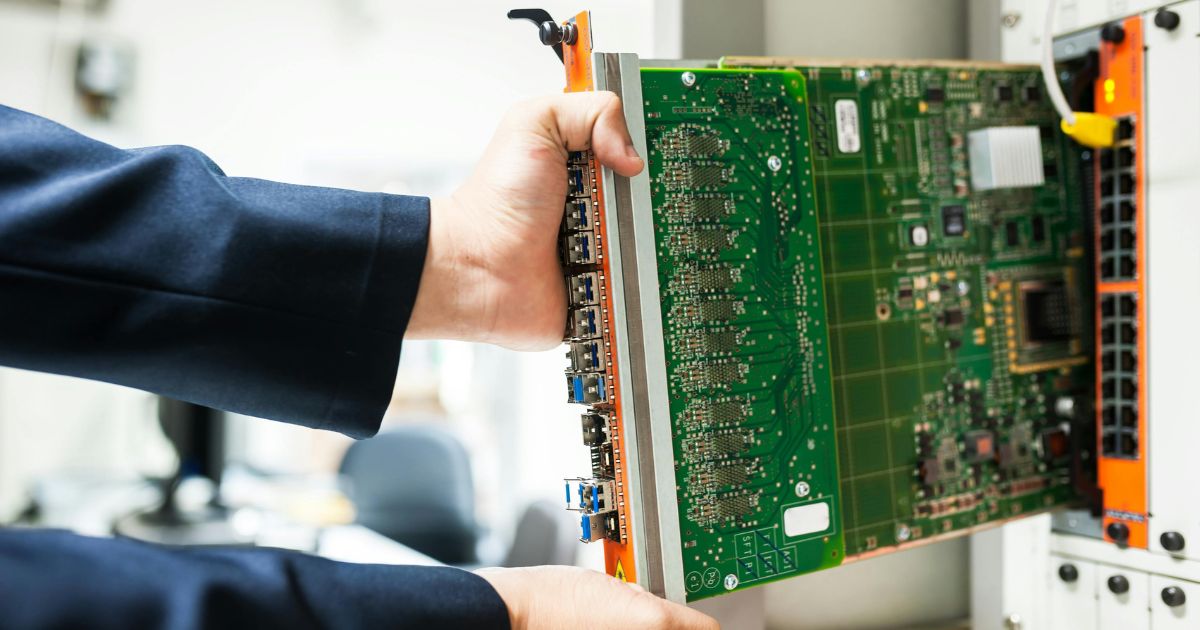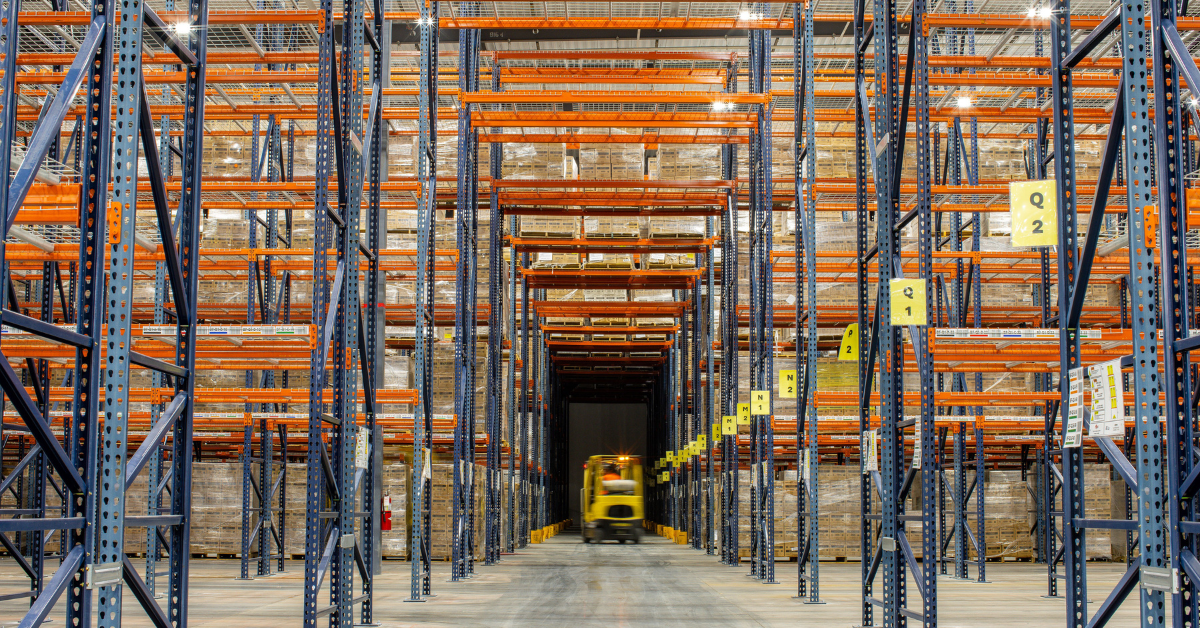Sacramento Server Decommissioning & Data Center Recycling

Key Takeaways:
- Protect sensitive information by safely removing and disposing of outdated servers and storage devices through secure data erasure.
- Ensure environmental compliance by working with certified e-waste providers that follow California’s electronic waste regulations.
- Develop a clear decommissioning plan that outlines timelines, resources and coordination with logistics partners to ensure an organized process.
- Take advantage of Sacramento’s expanding tech infrastructure and focus on renewable energy to support eco-friendly data center operations.
- Enhance operational efficiency by optimizing space utilization and incorporating new, energy-efficient equipment into your data center.
In the heart of California, Sacramento is quickly emerging as a critical player in the tech world. With its growing number of data centers, the city has become a hub for storing and processing vast amounts of information. However, as technology evolves at lightning speed, businesses managing these data centers face a critical challenge: safely and effectively decommissioning outdated servers and equipment while ensuring responsible recycling.
Server decommissioning and data center recycling are not just operational necessities; they are vital for maintaining data security, ensuring legal compliance, and supporting the city’s environmental sustainability efforts. Let’s explore the intricacies of server decommissioning, the importance of proper e-waste disposal, and actionable insights for businesses seeking warehousing and first and final-mile solutions for their data centers.
Understanding Server Decommissioning
What is Server Decommissioning?
Server decommissioning is the structured process of safely removing and disposing outdated or unused servers and storage devices from a data center. This process ensures businesses securely erase critical data, responsibly recycle equipment, and optimize IT systems efficiently. Businesses decommission servers are needed when hardware ends its useful life, requires an upgrade, or during relocation operations.
For businesses in Sacramento, a city known for its environmental awareness and tech-forward growth, server decommissioning goes beyond simply unplugging machines. Sacramento’s strategic location, robust infrastructure, and commitment to renewable energy make it the best site in California for businesses seeking optimal data center operations and eco-friendly disposal practices.
Why is Server Decommissioning Necessary?
There are several key reasons why business decommission servers are necessary, such as:
End-of-life equipment:
Over time, servers become obsolete and inefficient, leading to higher operational costs and security risks. Decommissioning ensures companies can upgrade to modern, secure, and efficient systems.
Upgrades and expansions:
As businesses adopt new technologies, older processing units must be replaced or supplemented with the latest infrastructure. Decommissioning outdated servers ensures a seamless transition to networking equipment while reducing the risk of downtime.
Relocation:
When businesses move their data centers or consolidate IT operations, decommissioning and equipment removal are often necessary to clear space and avoid transporting outdated equipment to the new location. This process is equally important during office relocations, where freeing up space and upgrading IT infrastructure can enhance overall efficiency in the new environment.
Space optimization:
Decommissioning old units frees up valuable physical space and resources in the data center, allowing businesses to optimize their infrastructure. This space can be used for new, energy-efficient equipment or other business operations, improving overall efficiency.
Pre-Decommissioning Planning and Preparation
Companies must thoroughly prepare before embarking on decommissioning practices. A proper data center decommissioning plan is essential to avoid potential data loss or security risks. Pre-decommissioning includes the following key steps:
- Inventory Creation: First, document all assets (servers, switchers, racks, wiring) slated for decommissioning. Tracking inventory ensures there’s no overlooking during the process.
- Stakeholder Engagement: To ensure clear communication, all relevant stakeholders, including IT teams, facility managers, and security personnel, should be notified and involved.
- Migration Plan: If equipment is being replaced or upgraded, you must develop a detailed migration plan. This plan should outline how workloads will be transferred to new systems or cloud solutions, ensuring minimal disruption to business operations.
- Data Backup: One of the most critical steps is ensuring that all data is backed up securely before decommissioning begins. Precaution helps protect against data loss and ensures business continuity.
Data Center Decommissioning Checklist
Once planning is complete, the decommissioning phase begins. This stage focuses on safely removing and disposing equipment while adhering to strict security protocols. A comprehensive decommissioning checklist is essential to ensure the process runs efficiently. It should address every key step, from securing data to meeting environmental regulations. Critical components of the checklist include:
Implement IT Asset Management
An efficient decommissioning process requires a well-structured IT asset management system to track and manage decommissioned equipment. By using asset tags, businesses can easily monitor and identify equipment throughout the process, ensuring transparency and preventing the loss of valuable assets.
Decommissioning Process Data Security
In Sacramento, like in Silicon Valley, data is a precious asset. During server decommissioning, it is crucial to implement multi-layered security measures throughout the process to keep data safe during the transition. Maintaining detailed logs of all data handling activities provides transparency and accountability. Lastly, adhering to California’s strict data protection regulations, including the California Consumer Privacy Act (CCPA), is essential to ensure full compliance.
To prevent data breaches, it’s essential to ensure data-bearing devices are handled securely during decommissioning. These devices must be treated with the highest level of care to safeguard sensitive information.
Data Erasure
One of the most critical steps is securely erasing data from decommissioned equipment. Using advanced data erasure techniques ensures that sensitive information is completely removed and cannot be recovered.
Optimize Logistics and Shipping Processes
The logistics of transporting decommissioned equipment can be complex, especially when dealing with first and final-mile delivery in urban areas like Sacramento.
- Logistical Planning: Develop a detailed plan for the secure transportation of equipment to recycling centers or new data centers.
- Certified Carriers: Working with certified carriers specializing in shipping IT assets ensures your equipment is safely transported.
- Urban Considerations: Sacramento’s urban congestion can present challenges for transportation, so planning routes and considering alternative delivery times may help mitigate delays.
Recycling and Disposal
Environmentally responsible disposal of data center equipment in Sacramento follows the requirements under California’s e-waste regulations. To ensure compliance and minimize environmental impact, businesses can follow the following strategies:
- Advanced Recycling Techniques: Dispose of servers, UPS batteries, and other equipment using advanced recycling methods. These techniques minimize environmental impact and ensure compliance with state laws.
- Certified Recycling Experts: Partnering with local Sacramento recycling experts ensures all decommissioned equipment is handled responsibly.
Partnering with a Local Data Center Decommissioning Expert
Data center decommissioning involves a complex process that requires specialized expertise. Partnering with a local expert in Sacramento ensures all process aspects are handled efficiently and securely. When choosing partners, consider:
- Certified Vendors: Working with certified decommissioning vendors ensures that your business complies with all regulations and maintains data security.
- Local Expertise: Experts from the area understand Sacramento’s unique business environment and can easily navigate regional regulations.
- Security and Environmental Protocols: Ensure your decommissioning partner follows strict security and environmental standards.
Achieving Seamless Data Center Decommissioning and Recycling in Sacramento
Data center decommissioning and recycling are essential to maintaining a secure, efficient, and environmentally responsible business. With its growing tech presence and increasing appeal as a top choice for those moving from the Bay Area searching for a fresh start, Sacramento is ideal for companies looking to upgrade their data centers. By partnering with certified vendors, following strict security protocols, and adhering to California’s electronic waste regulations, businesses can ensure a seamless decommissioning process that benefits their operations and the environment.
Are you planning to relocate your business? Take the next step toward secure data center decommissioning by trusting Armstrong’s moving services. Explore our moving services in Sacramento and enjoy a smooth, stress-free experience.
